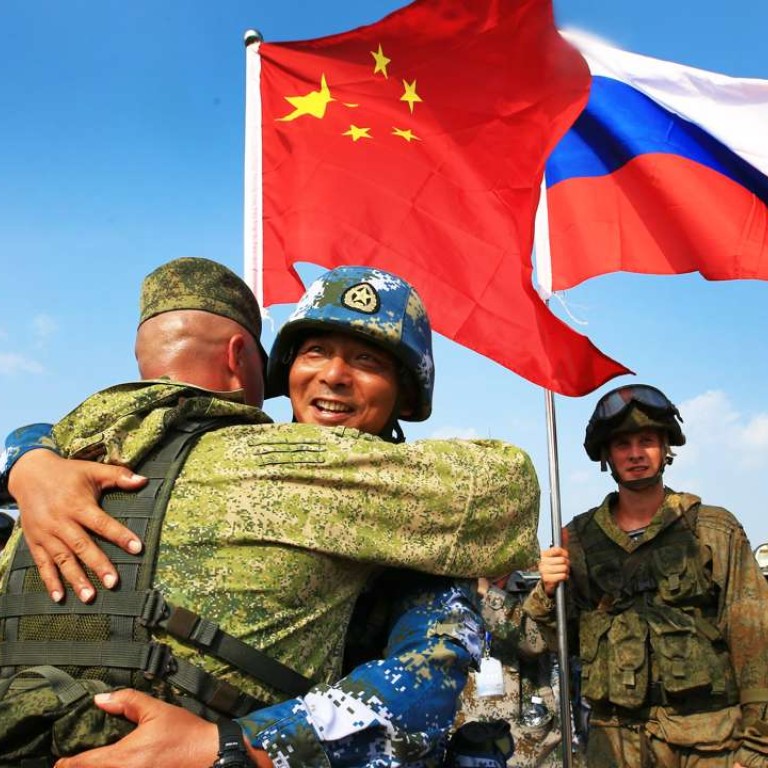
Beijing’s latest joint naval drills with Russia in South China Sea ‘just symbolic gesture’: experts


“But it’s still a significant move for the People’s Liberation Army Navy to conduct joint drills with its Russian counterparts in the region in the aftermath of the international tribunal ruling in The Hague.”
The ruling provided more grounds for the US to conduct its so-called “freedom of navigation” operations by sending its aircraft carriers to the disputed waters, which Beijing views as part of US President Barack Obama’s “pivot to Asia”.
Beijing has claimed nearly the whole region, but Brunei, Malaysia, the Philippines, Taiwan and Vietnam all have rival claims.
The latest naval exercises – the fifth to be held between the two nations since 2012 – are just one of the regular war games since Beijing and Moscow set up their military cooperational mechanism in 2005.
The annual naval drill, code-named “Joint Sea 2016”, which will end next Monday, comprises defence, rescue and anti-submarine operations, as well as island-seizing activities, China’s Defence Ministry said.


The drill were focusing on combat, digitisation and standardisation to promote naval cooperation between the nations, but were not expected to target specific enemies or any third parties, the ministry said.
Russia has been the only major country to show its support for China over the South China Sea disputes.
However, Macau-based military observer Antony Wong Dong said the joint drills showed that Beijing and Moscow had still not established “bilateral trust”.
Wong said: “Russia sent its biggest key warship from its Pacific fleet this time, but China didn’t deploy its most advanced 052D guided-missile destroyers – instead the inferior Type 052B and 052C ships, indicating how much they ‘trust’ one another.”
The warships sent by the Russian Navy feature its biggest anti-submarine destroyers Admiral Tributs and Admiral Vinogradov from its Pacific fleet. Both are 6,930-tonne Project 1155 Udaloy I-class vessels, which were originally built for the former Soviet Union’s Navy. The other ships taking part in the drills include the large amphibious ship Peresvet and the rescue tugboat Alatau to the joint-drills, Xinhua reported.
Li said the Russian vessels were all launched in the late 1980s, but both China’s Type 052B class Guangzhou and Type 052C class Zhengzhou destroyers were new-generation warships, which joined the navy in the 2000s.
The latest drill would make use of a China-Russia joint command information system for the first time, Liang told a news briefing on Monday, adding that the system was capable of sending, receiving and sharing information between all command posts and combat units at all levels.
However, Wong said the so-called joint command information system was limited to exchanging the navies’ radar and sonar data, and was not providing a “tactical data link” – the standardised communication system military allies used via radio waves or cable.
“Compared with the data link system the US shared with its Nato allies, there is almost no bilateral trust between China and Russia,” Wong said.

